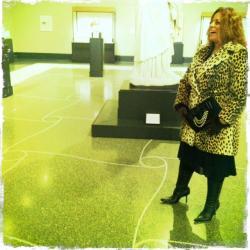A slightly belated Arbor Day shout-out to trees everywhere.
These remarkably sexy seed-pods are scattered by the thousands on the streets and sidewalks of Burbank, alongside the Chandler Bikeway. A friend of mine who is a botanist says that plants do nothing but think about sex; looking at these erotically slit pods confirms this theory.
These are the pods of the Kurrajong tree, native to Australia. It’s also named the Bottle-tree, for the voluptuous, vessel-like bulge at the base of the tree-trunk. And Latin-writing botanists call it Brachychiton populeneus, Sterculiaceae. But since Australia is the place with the earth’s longest unbroken history of human habitation, I’m sticking with the name the first people gave it, Kurrajong bidwilli.
The Kurrajong’s exquisitely Yoni-shaped pod is rock-hard, and splits to reveal a cache of roundish seeds. Each seed bristles with golden, velcro-like fuzz, presumably to adhere it to the fur of rodents and the feathers of birds who might spy the treats in their protective shell, thus ensuring distribution of the tree’s gene-pool. The seeds feel sticky and itchy to the touch, like the prickles of a finely quilled cactus, and will make you want to put your fingers in your mouth, like Pooh. Don’t do it.
We learn that the word “Kurrajong” comes from the nearly-eradicated (thank you, British Crown) Dharuk language, where the word means “fishing line”. Dharuk speakers (the Dharug or Eora/Iyora people, of the Yuin-Kuric language group), who inhabited what is now Sydney prior to colonization, shredded the bark of of this tree into fine but tough, resilient cords for snagging dinner from their abundant coastline waters.
Incidentally, the Dharuk language, which Australian Aboriginal advocates are now militantly fighting to preserve and restore, also gives the West the few native Australian words we may know: boomerang, dingo, koala. wallaby, wombat.
It’s impossible not to marvel at these shapes, which fall in graceful clusters to the sidewalks, probably knocked from the branches by feasting squirrels and crows. After the seeds have been picked clean, a honeycomb-like structure remains, which once held the seeds neatly in place like an ice cube tray, or like chocolates in a sectioned bonbonniere. Eventually, that grid is nibbled away, too, leaving the interior spaces mysteriously bare.
If you’re a crafter, like Liz Frolich (www.lizfroclichsculpture.co.uk), you may feel the urge to spray-paint and otherwise adorn these sculptural forms– for a fertility shrine, perhaps. Frolich adorns hers with metal foil and eyelets.
I tend to pick up a few clusters as I walk. The empty, hard pods clack and clatter against each other with each step in a pleasing, rhythmic way, an instant rattle. Then I usually leave them where I found them on the walk back, under the ancient shade of the Kurrajong trees.
–Victoria Thomas



